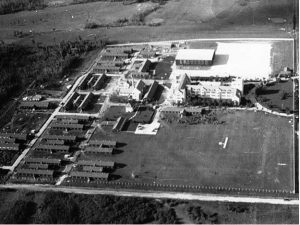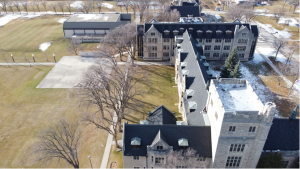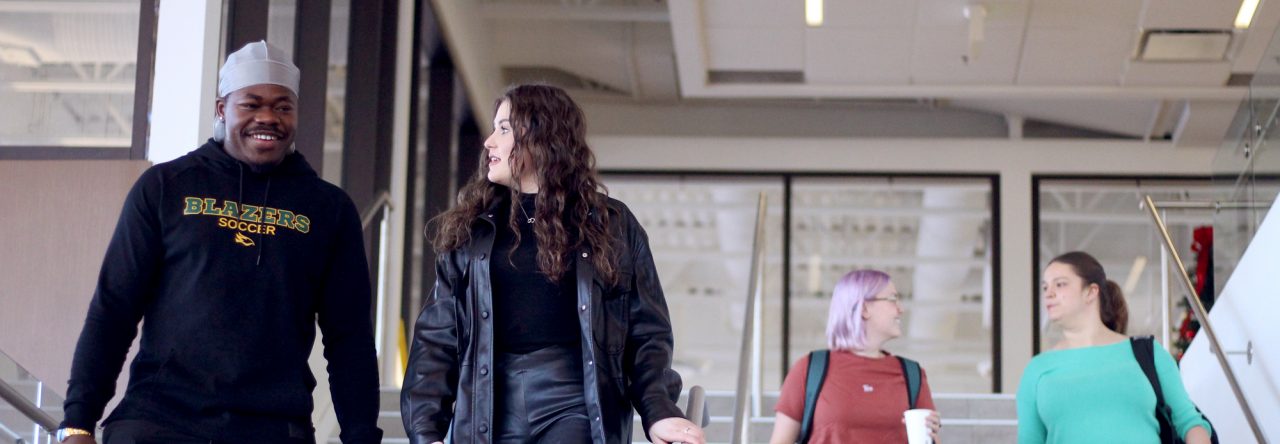My name is Founders Hall, but people also call me North, the castle building, and 500 Shaftesbury. This year, 2021, is my 100th birthday! I was built in 1921, but it was only in 1922 that my walls started echoing the calls of students and teachers. The pitter-patter of feet ricocheted off my walls as the boys and girls of the Manitoba School for the Deaf ran between dorm rooms, the girls entering through doors marked with owl and pelican engravings overhead, the boys through doors decorated by chipmunks.

From 1940-46 my halls were filled with constant “yes sirs” and perfectly timed steps as I became the home for the Wireless School No. 3. The school was designed to teach young men (and a few women) how to become wireless operators, communicating between planes and bases of the Commonwealth in World War II.
It is during this time that other buildings joined my ranks. There were barracks upon barracks, canteens, mess halls, a drill hall, coal shed, hospital, dental clinic, and the list goes on. In 1946, the slow destruction of the other buildings began as I became the home of the Normal School or the Manitoba Teacher’s College, as it became known later on. Once again my building became a place for learning and teaching. The first and second floor were classrooms, with a library, science room, and offices in the wings, and the third and fourth floors were still dormitories.

My dining hall smelled of shepherd’s pie and echoed with the clatter of forks and knives as the students ate together. The girls would serve dessert and set the tables, as some boys would trudge to the back to wash the pots and pans and peel the hundreds of potatoes needed for each meal. From 1965-95, my dining hall was still used to gather students together, but once again for the Manitoba School for the Deaf.
And now students of Canadian Mennonite University walk my halls, completely unaware of the history I hold and the clues I give them. My entrances are still marked with carvings of owls, pelicans, food, and the words, “Dining Hall.” My basement still holds the outlets for the irons the Wireless School No. 3 used to iron their clothes and the slate boards that marked their attendance.

As the years go on, I will continue to show students the clues of history past and hope they will walk my halls knowing that time passes and that they are part of a bigger story and history.
Perhaps as students are forced by COVID-19 to walk in only their neighbourhoods and pace their homes, they will stop to notice the clues that houses and people are giving them of the bigger picture. Life will go on and what makes it fun is the things we notice and learn along the way.
Natasha Neustaedter Barg is a fourth year Social Sciences student. Much of her research for this piece came from the Manitoba Historical Society.

